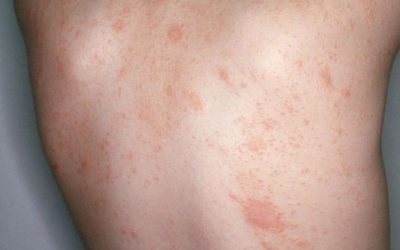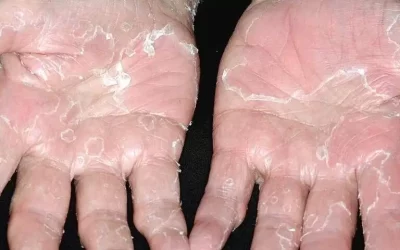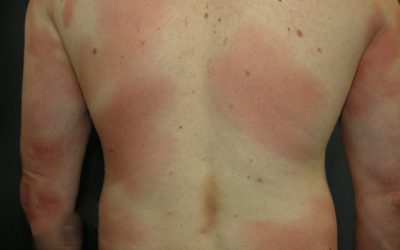Localized scleroderma
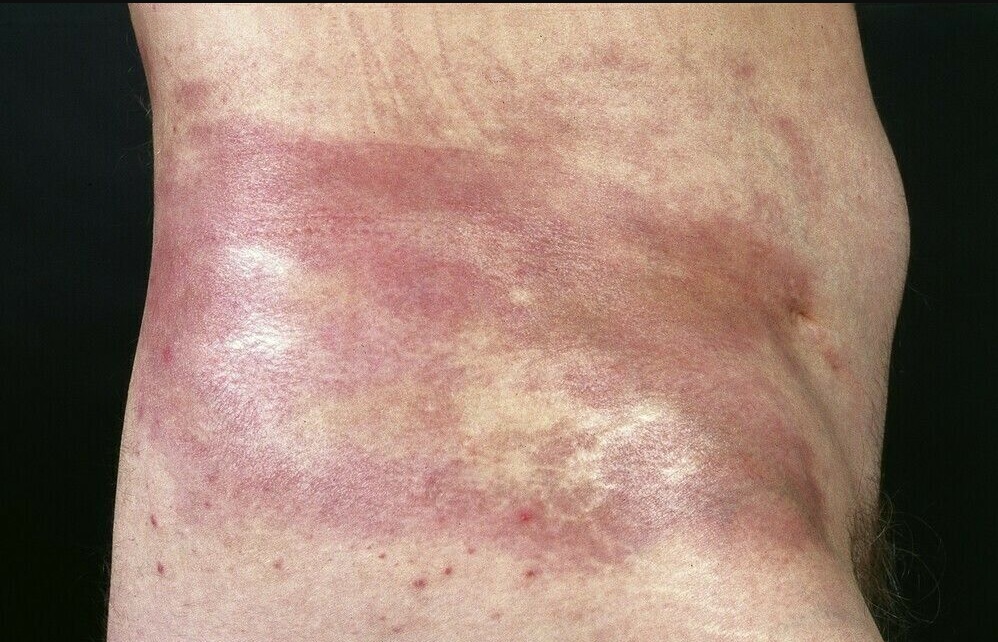
Local scleroderma (Latin: morphea) is a rare, chronic inflammatory sclerosing connective tissue disease affecting the skin and subcutaneous tissue. No damage to internal organs. Scleroderma does not progress to systemic scleroderma, but in very rare cases, patients are diagnosed with both forms.
Causes of the disease?
The mechanism of development is not sufficiently understood. The disease is thought to be caused by infections, especially borreliosis, Herpes zoster
Other common risk factors include trauma, radiation, various medications, surgery, injection, insect stings.
Increased incidence of autoimmune diseases (Hashimoto’s thyroiditis, focal alopecia, white spot, type 1 diabetes, antiphospholipid syndrome, primary biliary cholangitis) has been observed, and localised scleroderma may be associated with inflammatory skin diseases (scleroderma, lichen planus).
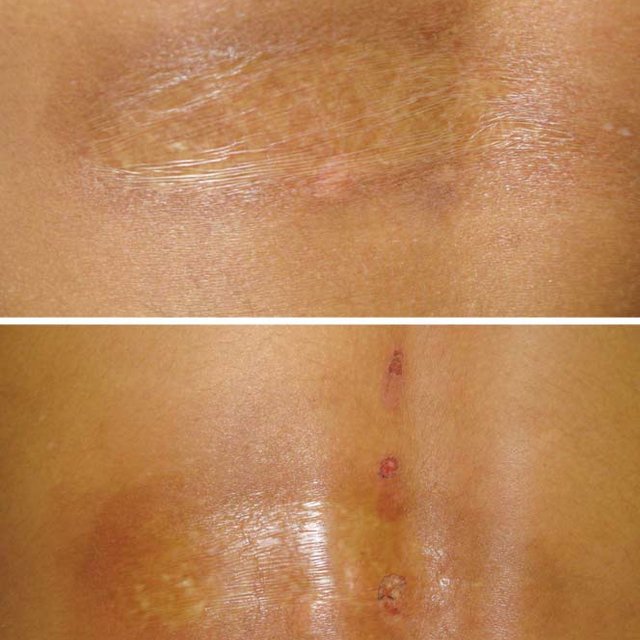

Clinical signs
It usually presents as oval, palm-sized hardened plaques surrounded by a red or pale purple border. In later stages, a whitish or ivory-coloured sclerosis appears in the centre. Old lesions are atrophic, pigmentless, slightly shiny. Characterised by loss of hair and skin appendages. Rashes are most common on the trunk, especially on the chest
Diagnostics
Diagnosis is confirmed by skin histology and a biopsy of a skin graft.
Treatment
The condition, while not entirely curable, can be managed by treating symptoms and limiting its spread. Common management strategies include the use of strong topical treatments applied twice daily to rash areas. Enhancing the penetration of these treatments can sometimes be achieved through specific application methods. For certain manifestations like scleroderma, this approach is typically continued for at least a month.
Injections by specialized health professionals in private clinics may also be an option. As the disease progresses, light-based therapy treatments become relevant. These are usually prescribed by a dermatologist following a detailed skin assessment during an in-person consultation. When the condition rapidly spreads, affecting not just the skin but other organs as well, systemic treatments, which might be oral or prescription-based, are considered.
The course and duration of the disease is individual, depending on the patient and the type of disease. Earlier diagnosis and timely treatment lead to a better prognosis. After successful treatment, a follow-up visit with a dermatologist at least once a year is recommended.

Pityriasis rosea
An acute, self-limiting, exanthematic skin disease that manifests as itchy, somewhat inflammatory, scaly rashes, usually on the torso, chest, and upper limbs.
Peeling skin syndrome
Peeling skin syndrome is a genetic disorder characterized by constant peeling of the skin. The disease appears from birth or in the first year of life
lasts a lifetime
Mycosis Fungoides
The most common primary skin T-cell lymphoma (cancer of the blood). Mycosis Fungoides is characterized by three main stages, several of which may exist at the same time
iDerma
MB iDerma
Fabijoniškės g. 99, Vilnius
+370 670 70 822
info@iderma.lt

